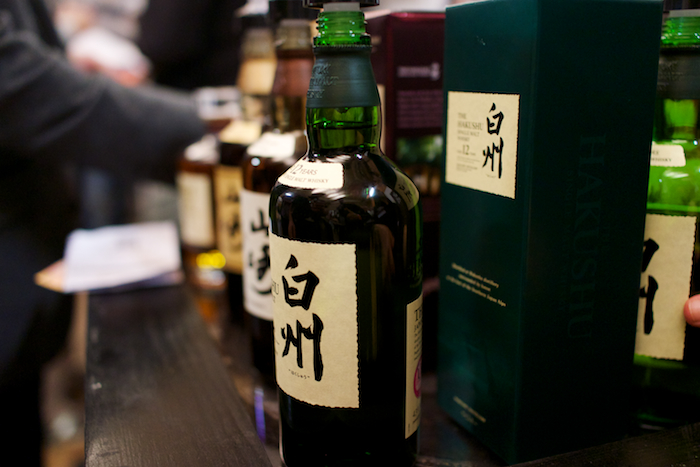With a broad range of pricing, no-age statement (NAS) single malt scotch whisky is here to stay. In contrast, scotch whisky marketers have been telling consumers the importance of well-matured whisky for decades. Many distilleries, however, can’t keep up with demand while aging their whisky ten or more years. The solution is to sell younger whisky without an age statement on the bottle. Often, this new ageless whisky sells for more than their standard offering.
To understand no-age statement whisky, we must first admit that age statements were an over-simplified representation of quality. Scotch whisky is matured in re-used barrels often from either the United States (American Oak) or Spain (European Oak). These different barrels add complexity to the whisky that scotch drinkers enjoy. The first time a barrel is used, it gives the most vanilla and spice flavours (think bourbon). The second time (known as first-fill in Scotland), some flavours might come from the previous spirit that soaked into the barrel. However, the majority of the flavours comes from the wood. The more often a barrel is used, the less flavour it’s likely to offer.
Understanding that, let’s consider how older whiskies are constructed. Whisky makers generally (not always) blend more first-fill re-used barrels in their older whisky. Not only is the Highland Park 18 aged for at-least 18 years, it also contains a higher ratio of first-fill European Oak giving the whisky a nuttier and sweeter characteristic compared to the 12. This added quality is not advertised on the bottle, but it is there.
It’s worth repeating: Not only are bottles with a higher age statement matured for longer, but they’re also often blended with a higher ratio of first and second-fill barrels responsible for additional flavour compared to their younger counterparts. The same is often true with NAS whisky. The more expensive the bottle, the higher likelihood of first-fill barrels were used. How would the consumer know, however?
Age-statements do provide a stated value. There’s an assumed investment by the distillery that if they matured barrels for 18 years, it’ll be the better barrels. With NAS whisky, consumers no longer have a cheat-sheet to help determine the value of the whisky. Instead of depending on the age-statement, NAS whisky has one obvious distinguishing factor: The Price.
Pricing luxury items is greatly dependent on the value of the brand. While whisky is definitely a luxury item, pricing whisky at higher valuations based on brand value doesn’t sit well with many whisky drinkers.
NAS whisky has been a controversy most whisky writers agree on. Scotch Blog ripped into The Macallan 1824 NAS whisky, preferring the older line with age statements. Curt, at All Things Whisky, makes the excellent point that distilleries, if they’re interested in educating the consumer, should note the ages of all the barrels that go into the final product. More bluntly, Oliver Klimek adds this straight-forward reasoning:
Yes, of course there are notable exceptions like the Aberlour A’bunadh or the Balvenie Tun 1401. But especially in Travel Retail (oh no, not again…) NAS bottlings often smack more of cost optimization and problems with dwindling stocks of properly aged whisky than they please the palate.
NAS whisky, on its own, is not a bad thing. Cost optimization, however, combined with NAS whisky is a challenge. Consumers were previously given some security that older whisky meant better whisky. Now they’re being told that price and branding are the only obvious factors that indicates the quality of the whisky.
That’s kind of ridiculous, isn’t it? I agree with Curt. If you’re going to sell NAS whisky, give us some idea of where that whisky comes from (Balvenie TUN 1509 does this quite well!). The lack of information on the bottle combined with high prices creates uncertainty. This uncertainty alienates consumers, and alienated consumers will take their money elsewhere. And as trendy as whisky is today, there’s always the next alcohol (already I’m seeing pro-vodka articles!).
High demand, low supply, and commercializes rarely increases the quality of the product. Scotch whisky is no exception.
If there is a bright-side to this, on a whole, there’s a lot of incredible whisky available out there. With all this competition and demand, distilleries are doing incredible things. It does, though, take more research on the consumer’s side when making purchases. Sure, prices are going up, but that’s going to happen with any high-demand product. We can’t help market pressures, but with well-researched purchases, you can continue to enjoy whisky whether or not there’s an age-statement on the bottle.
My book, The Whisky Cabinet, talks about this and many other topics on whisky. It also includes whisky recommendations that are often priced under $100, and easily available. It’s available for the holiayds in Canada, or for pre-order world-wide.



















